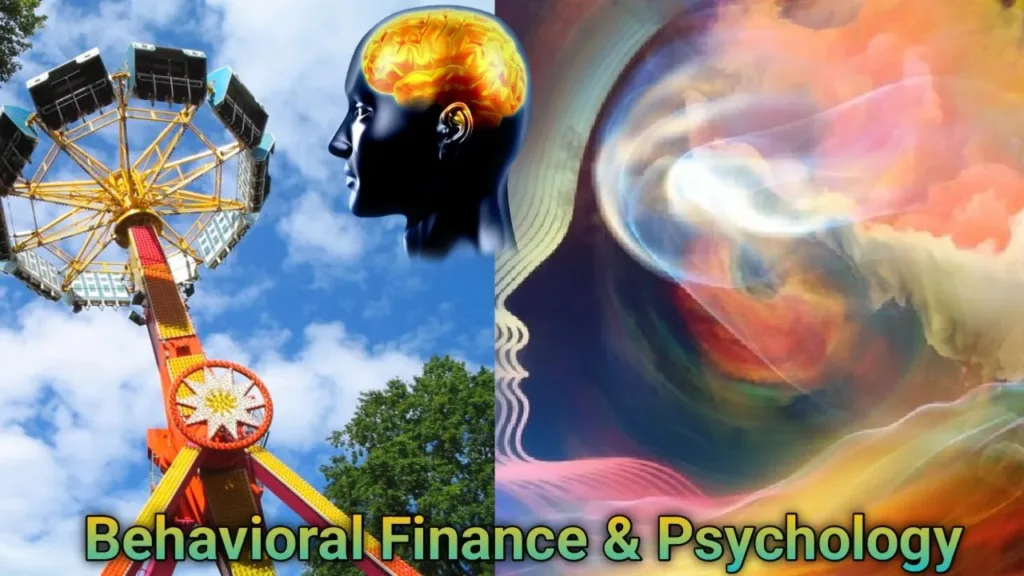
Introduction: Why Smart People Make Dumb Money Moves
Traditional finance assumes investors are rational. Behavioral finance knows better. This groundbreaking field reveals how psychology and emotions distort our financial decisions—often costing us thousands. Understanding these mental traps is the difference between investment success and self-sabotage.
1. Common Investing Biases: The Enemies in Your Mind
A. FOMO (Fear of Missing Out)
What it is: The panic-driven urge to jump into rising assets
Real-world example: Bitcoin’s 2017 surge when retail investors bought at $19k just before the 80% crash
Why it hurts:
- Leads to buying at peaks
- Ignores fundamentals
- Creates reckless risk-taking
Antidote:
✔ Set pre-defined investment criteria
✔ Implement a 24-hour “cooling off” rule
✔ Remember: There’s always another opportunity
B. Herd Mentality
What it is: Following the crowd without independent analysis
Classic case: The 1990s Dotcom bubble where investors piled into any “.com” company
Psychological roots:
- Evolutionary safety-in-numbers instinct
- Social proof bias
- Fear of being wrong alone
Combat strategy:
✔ Maintain an investment journal justifying decisions
✔ Seek contrary opinions deliberately
✔ Track “dumb money” vs “smart money” flows
C. Confirmation Bias
What it is: Only noticing information that supports existing beliefs
How it manifests:
- Overweighting bullish analysts when long
- Dismissing warning signs about held stocks
Harvard study finding: Investors spend 67% more time researching confirming than contradicting data
Solution:
✔ Assign a “devil’s advocate” role in your research
✔ Actively seek disconfirming evidence
✔ Use checklists to force objective evaluation
2. Emotional Discipline: The Investor’s Secret Weapon
The Neuroscience of Investing
Brain scans show:
- Financial losses activate the same regions as physical pain
- Market volatility triggers primal fight-or-flight responses
- Dopamine surges during wins create addiction-like patterns
Proven Emotional Control Techniques
A. The Warren Buffett Method:
- Never check prices more than weekly
- Make decisions in writing
- Imagine you couldn’t trade for 10 years
B. Military-Grade Discipline Tactics:
- Implementation intentions: “If X happens, I will Y”
Example: “If the market drops 10%, I will invest 5% more” - Emotional distancing: View your portfolio as a client’s
- Pre-commitment devices: Use automated investing rules
C. The 10-10-10 Rule:
Ask: How will I feel about this decision in:
- 10 minutes?
- 10 months?
- 10 years?
3. Market Bubbles & Crashes: Psychology in Action
Anatomy of a Bubble (Hyman Minsky Model)
- Displacement: New paradigm excites investors (e.g., “internet changes everything”)
- Boom: Prices rise, drawing in more buyers
- Euphoria: Valuation metrics abandoned (e.g., “price-to-eyeballs”)
- Profit-taking: Smart money exits
- Panic: Everyone rushes for the exits
Spotting Bubble Warning Signs
🔴 Media indicators:
- “This time is different” narratives
- “Taxi driver stock tips” phenomenon
- Celebrity endorsements (e.g., Kim Kardashian pushing crypto)
📈 Market indicators:
- Prices detach from fundamentals (see Shiller P/E)
- Margin debt at record highs
- IPO mania (companies with no profits going public)
Crash Psychology: What Actually Happens
- Denial: “It’s just a correction”
- Fear: Panic selling accelerates
- Desperation: “Get me out at any price”
- Depression: Avoid looking at statements
- Missed recovery: Sitting out the rebound
Historical Case Studies
| Bubble | Peak | Crash | Psychological Driver |
|---|---|---|---|
| Tulip Mania (1637) | 10x salary for bulbs | -90% | Status competition |
| 1929 Crash | P/E of 32 | -89% | “New era” thinking |
| Dotcom (2000) | Pets.com IPO | -78% | Technological awe |
| 2008 Housing | CDO mania | -57% | “Home prices never fall” |
| Crypto 2021 | BTC $69k | -77% | FOMO & generational hype |
Practical Applications: Becoming a Smarter Investor
1. Build Psychological Resilience
- Mental contrasting: Visualize both success AND potential failure
- Stress-test your portfolio: How would you handle a 50% drop?
- Practice “loss inoculation”: Start with small positions
2. Institutional-Grade Safeguards
- Position sizing rules: Never risk >2% on single idea
- Circuit breakers: Automatic stops at predetermined levels
- Diversification by psychology: Mix momentum and value assets
3. Behavioral Audit Checklist
Before any investment decision, ask:
- Am I acting on research or emotion?
- What contrary evidence have I considered?
- How would I advise a friend in this situation?
- Does this fit my long-term plan?
Conclusion: Mastering the Market Between Your Ears
The most important portfolio you’ll ever manage is your psychological one. By understanding these mental models:
- You’ll avoid costly behavioral mistakes
- Spot market extremes before others
- Maintain discipline when others panic
Remember: In markets, the person who controls their emotions controls their financial future. The next time you feel investment fear or greed rising, pause—that’s your signal to think differently than the crowd.
Want to go deeper? Explore these resources:
- Books: Thinking, Fast and Slow (Kahneman), The Psychology of Money (Housel)
- Tools: Morningstar’s Investor Behavior Dashboard
- Courses: Yale’s Behavioral Economics on Coursera
This knowledge isn’t just power—it’s profit. Because in the end, the market’s most dangerous illusions are the ones we tell ourselves.
Read More:- 1. how to invest 2025 investments
